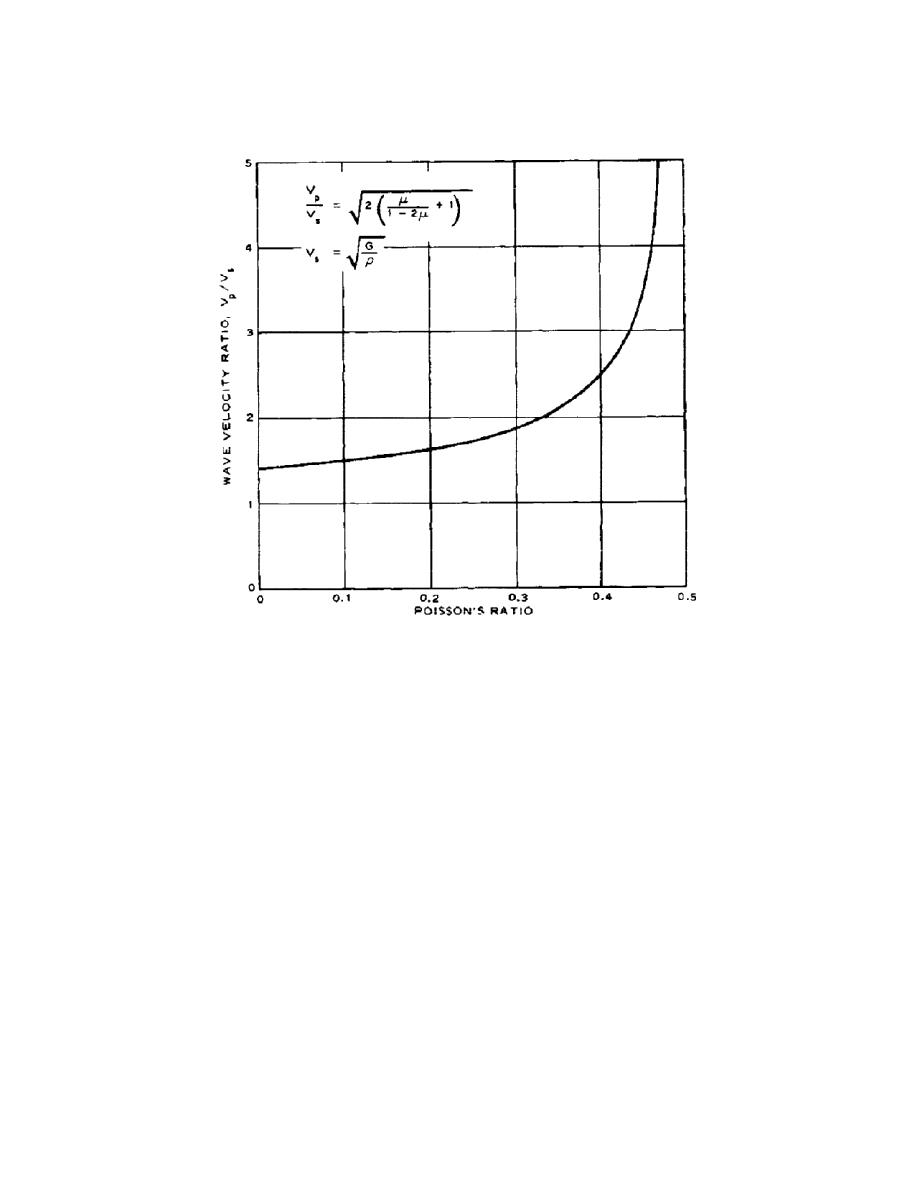
UFC 3-220-01N
15 AUGUST 2005
Figure 12-8 Theoretical Relation Between Shear Velocity Ratio Vp/Vs and
Poisson's Ratio
12-1.5.3
Laboratory Measurement of Dynamic Stress-Strain Properties. Low
shear-strain amplitude, e.g., less than 10-2 percent, shear modulus data may be
obtained from laboratory tests and usually involves applying some type of high-
frequency forced vibration to a cylindrical sample of soil and measuring an appropriate
response. Some types of tests allow the intensity level of the forced vibration to be
varied, thus yielding moduli at different shear strains.
High strain-level excitation, e.g., 0.01 to 1.0 percent, may be achieved by
low-frequency, cyclic loading triaxial compression tests on soil samples. The modulus,
damping and strain level for a particular test are calculated directly from the sample
response data. The usual assumption for calculating the modulus and damping from
forced cyclic loading tests on laboratory samples is that at any cyclic strain amplitude
the soil behaves as a linear elastic, viscous, damped material. A typical set of results
may take the form of a hysteresis loop as shown in Figure 12-9. Either shear or normal
stress cyclic excitation may be use. The shear modulus is calculated from the slope of
the peak-to-peak secant line. The damping is computed from the area of the hysteresis
loop, and the strain level is taken as the single-amplitude (one-half the peak-to-peak
amplitude or origin to peak value) cyclic strain for the condition during that cycle of the
test. Note that the equations for modulus and damping shown in Figure 12-9 assume
the soil behaves as an equivalent elastic viscous, dampened material, which is linear
12-17


 Previous Page
Previous Page
